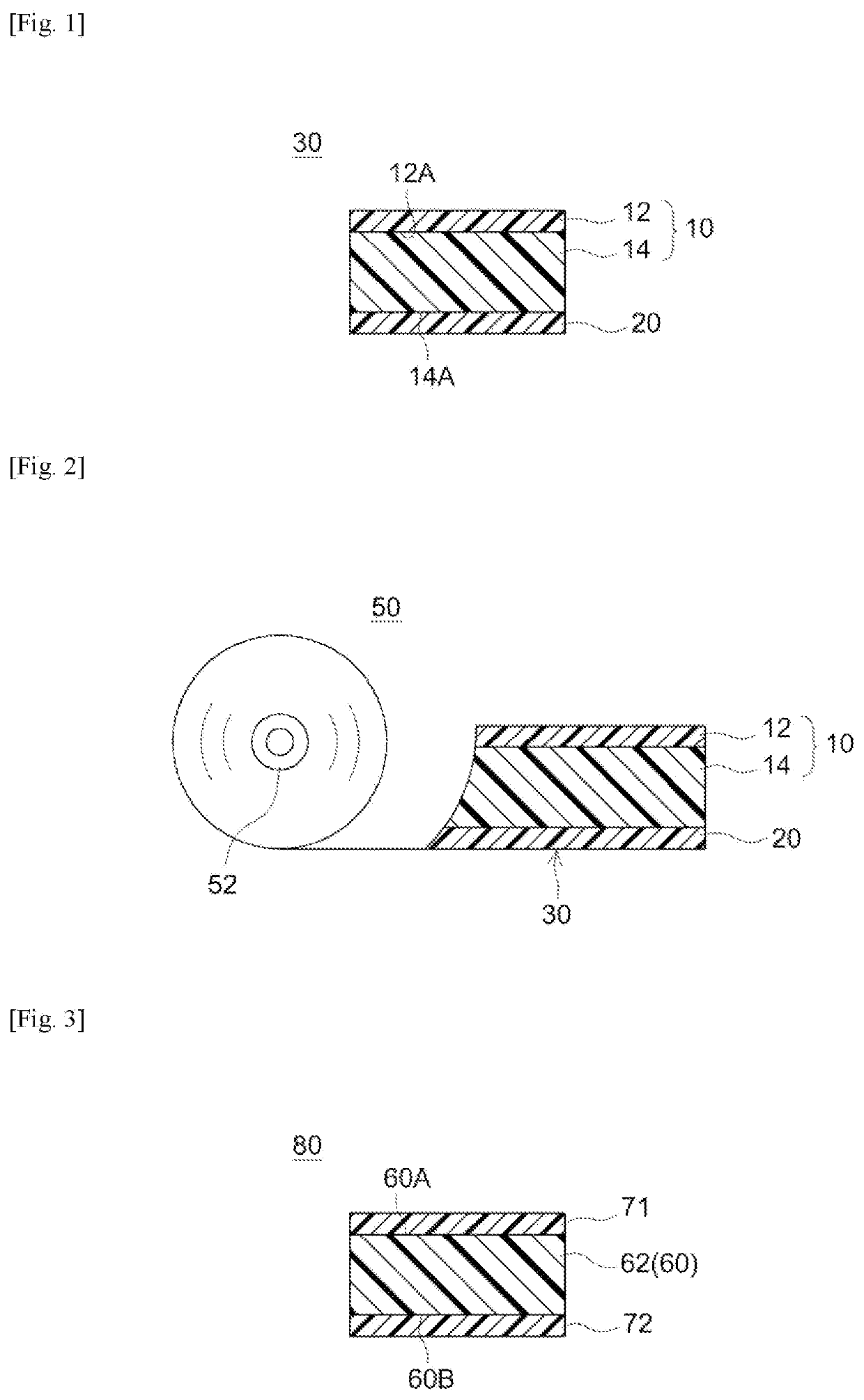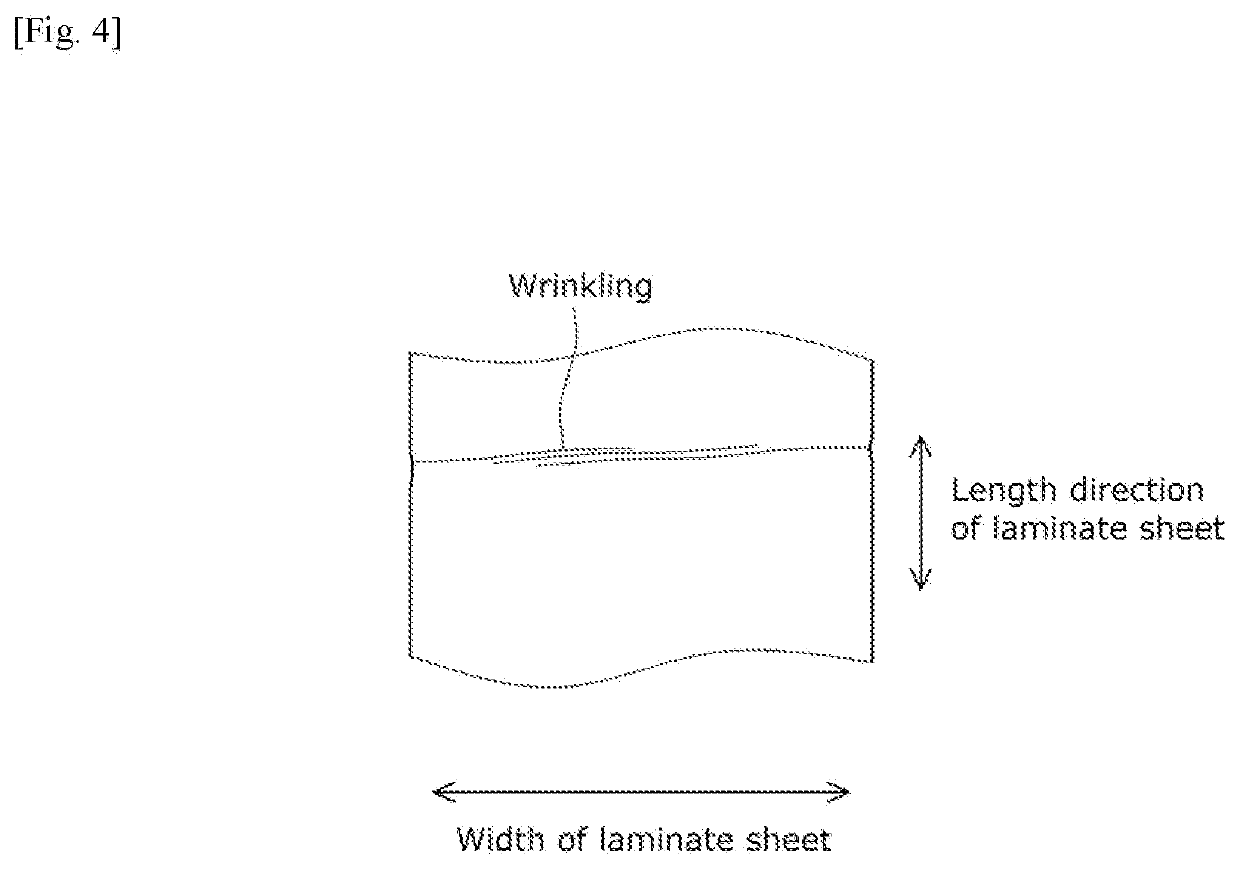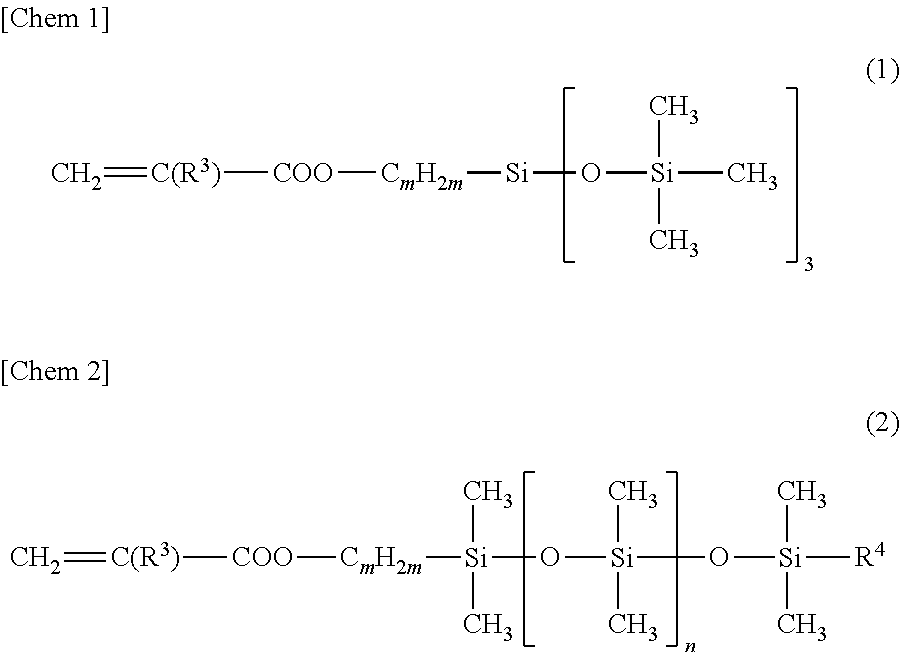Laminate sheet and roll
a technology of laminate sheets and rolls, applied in the field of laminate sheets, can solve the problems of partial deformation of laminate sheets, wrinkling (or crease) on the inside surface of laminate sheets, and the thickness of laminate sheets with highly rigid sheets such as polyethylene terephthalate films is susceptible to wrinkling, so as to increase the thickness of psa layers, and increase the effect of contour-conformability
- Summary
- Abstract
- Description
- Claims
- Application Information
AI Technical Summary
Benefits of technology
Problems solved by technology
Method used
Image
Examples
example 1
[0177]As a support substrate S1, was used a 38 μm thick transparent PET film (LUMIRROR S10 available from Toray Industries, Inc.; tensile modulus 2200 MPa). To the PET film, was applied a UV-curable acrylic PSA composition C1 containing approximately 70% filler. This was covered with release liner L0 (a 75 μm thick transparent PET film treated with a silicone-based release agent on one face) to block the air. The PSA composition C1 was cured by UV irradiation to form a 200 μm thick PSA layer having a storage modulus of 0.6 MPa. Subsequently, release liner L0 was removed from the PSA layer. To the exposed PSA layer, was newly adhered a release liner L1 (a 100 μm thick white-colored PE film treated with a silicone-based release agent on one face). In other words, release liner (process liner) L0 covering the adhesive face was replaced with release liner (product liner) L1. A laminate sheet was thus prepared, having a structure in which support substrate S1, the PSA layer and release l...
example 2
[0178]The amount of the PSA composition C1 applied was adjusted to form a 400 μm thick PSA layer. Otherwise in the same manner as Example 1, was prepared a laminate sheet according to this Example.
example 3
[0179]In place of the PSA composition C1 in Example 2, was used a UV-curable acrylic PSA composition C2 having the same composition as the PSA composition C1, but without the filler. Otherwise in the same manner as Example 2, was prepared a laminate sheet according to this Example.
PUM
| Property | Measurement | Unit |
|---|---|---|
| thickness | aaaaa | aaaaa |
| storage modulus | aaaaa | aaaaa |
| inner diameter | aaaaa | aaaaa |
Abstract
Description
Claims
Application Information
 Login to View More
Login to View More - R&D
- Intellectual Property
- Life Sciences
- Materials
- Tech Scout
- Unparalleled Data Quality
- Higher Quality Content
- 60% Fewer Hallucinations
Browse by: Latest US Patents, China's latest patents, Technical Efficacy Thesaurus, Application Domain, Technology Topic, Popular Technical Reports.
© 2025 PatSnap. All rights reserved.Legal|Privacy policy|Modern Slavery Act Transparency Statement|Sitemap|About US| Contact US: help@patsnap.com



